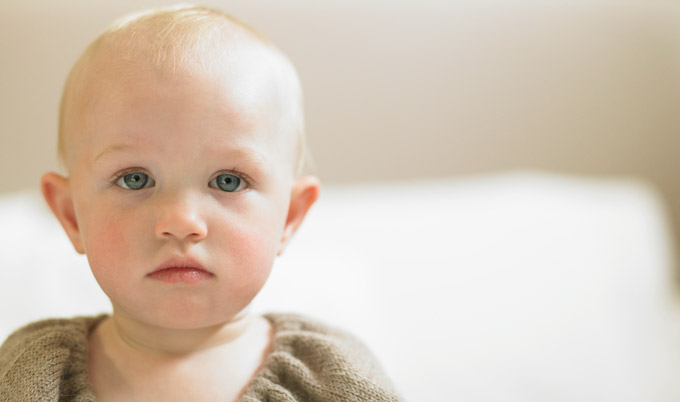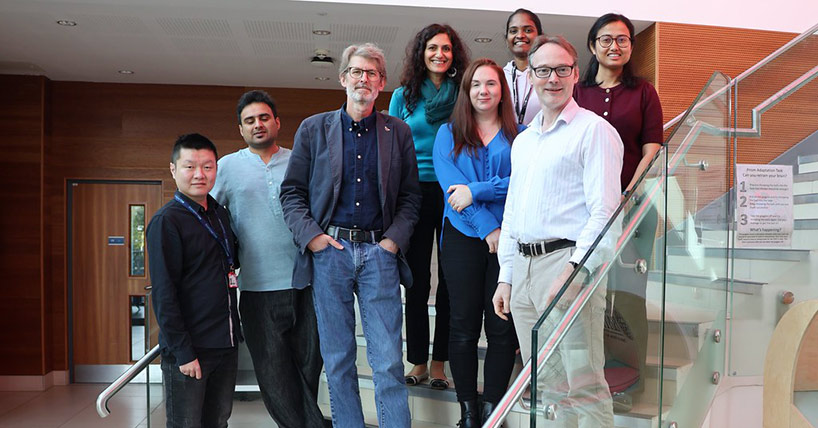Childhood cancer blog
Improving treatments for childhood nerve cancer is required
Published on: 10 October 2016
Every year in the UK around 1,600 children are diagnosed with cancer, and thanks to research, the number of children surviving their disease has tripled since the 1960s.
But there are still some types of childhood cancer where survival is still simply not good enough, writes Cancer Research UK in their latest blog.
One of these is neuroblastoma – a disease that affects around 100 children a year in the UK.
It usually affects children under the age of five, developing from nerve cells and is usually first found in the abdomen.
But once diagnosed, a child’s prospects of a successful recovery can vary considerably. The disease develops as low, intermediate or high risk depending on the aggressiveness of the tumour.
Children with the low risk form, who are often babies, are usually cured with surgery or a small amount of chemotherapy – sometimes the cancer even regresses on its own.
But more than half are diagnosed with the high risk form, where the tumour has already spread in children over the age of 18 months or there are key genetic changes inside the tumour. This type of disease either doesn’t respond to treatment, or more commonly responds initially and then comes back within just a couple of years.
Another 10 per cent of children with neuroblastoma will have the intermediate risk disease, and doctors are still working out how best to treat this type.
This variability can make it difficult for doctors to assess each childs’ needs, and emphasises the importance of research into how different types of neuroblastoma respond to treatment.
And a study published by a team of scientists points to some possible answers.

A complex cancer
The study included data from 189 patients. And it looked at how children with neuroblastoma that has come back – called a relapse – responded to treatment over a 20-year period across four hospitals in the UK.
These four hospitals, The Royal Victoria Infirmary, Newcastle, Leeds Teaching Hospitals NHS Trust, The Royal Manchester Children's Hospital and The Royal Marsden Hospital, treat around 1 in 3 neuorblastoma patients in the UK.
A relapse occurs when the disease comes back in a new location or the original tumour grows again after initially responding to treatment.
And since the study only looked at children whose neuroblastoma had come back, the vast majority (159 out of 189) of these cases were defined as high risk, while 24 were of intermediate risk.
The researchers found that, despite some improvements in treatment over the last 10-20 years, survival for children with relapsed, high risk neuroblastoma remains very low.
Around the year 2000, high risk patients began being treated more intensively with more different types of treatment, raising the average survival after relapse from 2.9 months to 8.4 months.
But fewer than 1 in 10 of these children survived more than five years.
The researchers found similar survival rates in other countries, demonstrating that getting more effective treatments to high risk relapsing neuroblastoma patients is a truly global problem.
Of the children with a particular type of intermediate risk disease, only 1 in 4 survived after relapse. Even those who had gruelling treatment after their cancer relapsed sadly still lost their lives.
If doctors could be confident which patients in this particular subgroup of intermediate risk neuroblastoma were likely to relapse, then providing more intense treatment upfront could potentially save these children.
Professor Deborah Tweddle, lead author on the study from the Northern Institute for Cancer Research at Newcastle University, thinks it’s essential that doctors and researchers focus their efforts on the underlying biology of the disease to help determine the best treatment for each child.
“For too long outcomes for high-risk relapsed neuroblastoma have been unacceptably poor,” she says. “We must do better.”
“While we have made some progress for these children, it’s only through clinical trials that we can determine which therapies are most effective.
“Once we master the complexity of the disease we can begin to personalise treatment for each child.”
What makes neuroblastoma aggressive?
One of the biggest influences on the likelihood of neuroblastoma responding to treatment is whether or not the cancer cells contain multiple copies of a gene called MYCN.
The molecule produced by the gene sends a signal telling the cell to grow. But when too much is made – in the case of a cell that carries extra copies of the gene – the cell grows uncontrollably, leading to cancer.
Researchers have known for decades now that too much MYCN leads to a more aggressive form of neuroblastoma. But there hasn’t been an easy way for them to tackle the excess – many believe the molecule produced by the gene is ‘undruggable’.
On top of this, flaws in another molecule, called anaplastic lymphoma kinase (ALK), can also give rise to neuroblastoma tumours in around 10 per cent of cases.
Fortunately, drugs have been developed that directly target cancers with this faulty molecule, but clinical trials are still needed to identify which patients are likely to benefit from these treatments.
Neuroblastoma can also be caused by physical breakages in the organised packages of DNA held within a cell – so-called chromosomal abnormalities. And these can result in the loss of large regions of DNA, causing faults in the cell that can lead to cancer.
Other biological factors that contribute to the aggressiveness of the tumour include how old the child is at diagnosis, whether the disease has already spread and what the tumour looks like under a microscope.
Overall, this complex combination of factors is used to assign a child to a particular risk group. But doctors aren’t yet able to predict who can be cured. Too little treatment for patients in this group and the cancer could come back, while too much treatment risks serious life-long side effects.
So what can be done?
A collective effort
Neuroblastoma is a complex, highly variable cancer, responsible for around 15 per cent of all childhood cancer deaths.
And researchers have a lot of work to do to bring survival up in line with other childhood cancers.
But as scientists understand what is going on ‘beneath the hood’ of the disease, more treatment options are becoming available and clinicians can be more targeted in their approach.
Studies such as the one published this week highlight how patients with relapsed neuroblastoma are being managed today, providing a baseline for which new therapies can be measured.
“I often think of parents of children with cancer sitting in the wards waiting while their children are having treatment,” says Professor Tweddle.
“Many of these will have leukaemia, where survival is close to 90 per cent. And the parents of neuroblastoma patients will rightfully be wondering why the outlook for their children’s cancer seem so far behind.
“The truth is we are getting there. Scientists around the world are combining their knowledge of the disease to unpick which patient’s tumours have weakness we can exploit.”
And the good news is that new therapies are being tested in the lab and in early phase clinical trials.
Cancer Research UK is supporting several trials to develop better treatments for relapsed neuroblastoma.
And new treatments that harness the power of the immune system, target the specific genetic faults driving the disease, or more effective combinations of treatments are all being investigated by researchers.
Finding out which are the most effective and against which types of neuroblastoma is the task ahead.
But with more research and faster, more accurate diagnostics, doctors will be better placed to give the right treatments to the right patients when they need it most.
Written by Cancer Research UK



